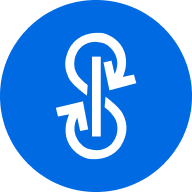Following its inception, the Terra 2.0 ecosystem has launched 44 distinct projects encompassing various sectors, such as finance,
non-fungible tokens (NFTs), and gaming.
Terra is an open-source blockchain platform fostering an extensive ecosystem comprising decentralized applications (dApps) and developer tools. Leveraging the underlying Cosmos (ATOM) blockchain framework, Terra has achieved remarkable speed, positioning itself as one of the swiftest blockchains available, capable of processing up to 10,000 transactions per second (TPS).
The Terra team
Daniel Shin and Do Kwon launched the original Terra project in January 2018. As a result of the 2022 collapse, Do Kwon issued a revival plan that led to the creation of Terra 2.0 and Terra Classic blockchains. Now, Terra is a community-owned blockchain where decisions are reached via decentralized voting.
How does Terra work
Following the blockchain fork in May 2022, Terra embarked on a new journey known as Genesis, where the network was built from scratch. Terra’s primary objective is to construct a permissionless and borderless digital economy that can support the next wave of innovative financial products. Leveraging frameworks from the Cosmos blockchain, Terra has achieved a remarkable level of throughput, enabling high transaction processing capacity.
Terra maintains compatibility with the Cosmos ecosystem by retaining the Cosmos SDK (software development kit), empowering developers to create high-performance dApps on the Terra chain. To optimize and enhance the core functionality of the network, Terra employs a unique set of codes referred to as Mantlemint.
These codes enable Terra to deliver a fast and optimized experience, efficiently serving a substantial number of user queries. As outlined in the Terra white paper, a Mantlemint node is capable of performing three to four times more queries than a standard Secret Node.
In terms of consensus mechanism, Terra utilizes a distinctive approach called Tendermint, which relies on a proprietary Byzantine Fault Tolerant (BFT) Proof of Stake (PoS) infrastructure. This consensus mechanism leverages partially synchronous communication to ensure agreement among network participants, facilitating secure and efficient consensus within the Terra ecosystem.
The native token of the Terra 2.0 Ecosystem: LUNA
LUNA is the native token of the new Terra or Terra 2.0 blockchain. It is used for decentralized governance of the Terra 2.0 ecosystem. LUNA holders are given the right to vote on decisions that influence the future of the platform, making them stakeholders in Terra's ecosystem.



































